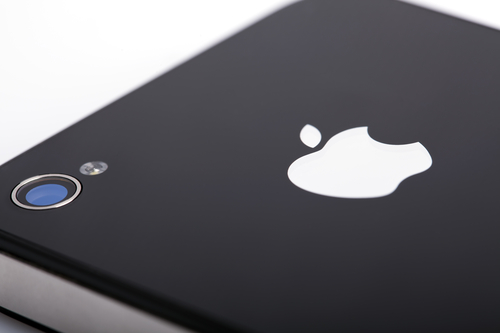On Friday, October 6th, Chicago, IL-based intellectual property owner Ironworks Patents LLC filed a patent infringement case against Cupertino, CA-based consumer tech giant Apple Inc. (NASDAQ:AAPL) in the District of Delaware. Ironworks’ complaint alleges that Apple’s sale of various iPhone models infringe upon patents that Ironworks owns which cover programmable alert sounds and related technologies incorporated into Apple’s smartphones.
Ironworks’ complaint asserts a series of three patents against Apple:
- U.S. Patent No. 6850150, entitled Portable Device. Issued in February 2005 to Finnish telecom firm Nokia, the patent covers a portable device having control means for monitoring and controlling the device’s operation and a user interface with alarm means for performing a silent alarm producing a silent, tactile, invisible sensation in the user. The invention addressed shortcomings in device accessibility to aurally impaired individuals.
- U.S. Patent No. 8847734, titled Method of Giving the User Information, Portable Device, and Computer Program Product. Issued in September 2014 to MobileMedia Ideas, it discloses a mobile station having a user interface configured to enable a user to control operation of the mobile station, a tactile alert device generating a tactile vibration, and a control circuit controlling the tactile alert device to generate multiple vibration patterns which are distinctly humanly perceptibly different, one of the vibration patterns indicating the input of an incorrect personal identification number code.
- U.S. Patent RE39231, titled Communication Terminal Equipment and Call Incoming Control Method. Issued in August 2006 to Japanese tech conglomerate Sony, the reissue patent covers a communication terminal for informing a user of a received call from a remote caller, the terminal having an alert sound generator to generate an alert sound when the call is received, control means for controlling the alert sound generator, and a means for specifying a predetermined operation by the user which can change the volume of alert sounds for incoming calls from specific remote callers without affecting the remote caller’s perception of the call ringing state.
Part of Ironworks’ allegation in its patent complaint include the charge that Apple had knowledge of its own infringement of both the ‘150 patent and the ‘231 reissue patent going back to February 2010. During that month, MobileMedia Ideas, which had obtained ownership of those two assets, notified Apple that it was infringing upon those assets. MobileMedia filed suit in March of that year and a jury verdict finally came out last September which found that Apple infringed on two claims of the ‘231 reissue patent. That verdict also upheld the validity of the ‘231 patent over Apple’s allegations of obviousness in light of prior art. The jury awarded MobileMedia reasonable royalty damages of $3 million; Ironworks’ complaint notes that this figure amounts to a royalty of 4.2 cents per unit.
In April 2017, Ironworks filed an unopposed motion to substitute party and counsel to take over the legal proceedings begun by MobileMedia. In May, Ironworks provided Apple with a claim chart indicating Apple’s ongoing infringement of the ‘150 and the ‘734 patents. Then in June, the Delaware federal court judge deciding the case entered a final judgment on the ‘231 infringement findings which enhanced the damages to $10.7 million, reflecting a per unit royalty rate of 12.5 cents.
In its most recent complaint against Apple, Ironworks identifies a number of polite ignore device products accused of infringing the asserted ‘231 patent. These accused products include the iPhone 4s, iPhone 5, iPhone 5s, iPhone 5c, iPhone 6 (Plus) and iPhone 6s (Plus); the iPhone 3 and iPhone 4 have already been found as infringing the asserted claims of the ‘231 patent. The accused products allow users to push the volume button in order to silence a ringtone without immediately sending the caller to voicemail. Ironworks further alleges that Apple infringes on claim 1 of the ‘150 patent through the sale of many of the same accused products as well as other tactile alert devices which are configured to provide multiple vibration patterns to differentiate notifications, such as the iPhone SE and the iPhone X. Claim 1 of the ‘734 patent is also infringed by the sale of accused haptic feedback devices which are similarly configured to provide vibrations with different patterns to notify device users of various events. Along with reasonable royalties, Ironworks is also seeking a declaration that Apple’s infringement was willful and deliberate, a finding which entitle Ironworks to enhanced damages under 35 U.S.C. § 284.

![[IPWatchdog Logo]](https://ipwatchdog.com/wp-content/themes/IPWatchdog%20-%202023/assets/images/temp/logo-small@2x.png)


![[Advertisement]](https://ipwatchdog.com/wp-content/uploads/2024/04/Patent-Litigation-Masters-2024-sidebar-early-bird-ends-Apr-21-last-chance-700x500-1.jpg)

![[Advertisement]](https://ipwatchdog.com/wp-content/uploads/2021/12/WEBINAR-336-x-280-px.png)
![[Advertisement]](https://ipwatchdog.com/wp-content/uploads/2021/12/2021-Patent-Practice-on-Demand-recorded-Feb-2021-336-x-280.jpg)
![[Advertisement]](https://ipwatchdog.com/wp-content/uploads/2021/12/Ad-4-The-Invent-Patent-System™.png)







Join the Discussion
No comments yet.